Some people build fantasy football teams. Others spend hours living as their avatar in sci-fi games. I escape reality through daydreaming about dinner parties.
I have pages and pages of make-believe menus, created for imagined soirees, both grand and humble. And of course, I also have the antonym – my adored, illustrated guest book that records the meals I have served and signatures of those in attendance.
Not only do I love curating my own feasts, but I also regularly creep what others are doing and serving. This week, I’m sharing a few wonderful cookbooks based on menu building, all of which literally make me salivate. I love these anthologies for their inspiration and creativity – and straight-up entertaining ease. Pick a chapter and see it through from soup to nuts. But of course, no one has a gun to your head: take a little from this and a little from that, if the muse strikes.
I’m also sharing my recipe for carbonara. The earliest recordings of my first attempts at this recipe, now mercifully lost to the dark recesses of the internet, date back to 2012 when I wrote about a late-summer dinner party for The Wine Sisters’ original blog (also now lost to time – and website revisions.)
As I wrote in the coq au vin entry, I tinker, toy, adjust, and edit recipes until I have something that really works. And this carbonara really works. It’s written out below along with some ideas for wine pairings.
Cookbooks to Make You (and Me) a Better Host
As most of you know, The Wine Sisters sends out a monthly newsletter called Steal This Menu! It’s a dinner party plan from start to finish for a seasonal soirée. I write it. It’s one of my favourite work projects, because, as mentioned, I simply love putting together menus. I also find what others are doing equally fascinating and inspiring. Here are three that I have read from cover-to-cover, more than once and highly recommend.
The Dinner Party: A Chef’s Guide to Home Entertaining by Martin Benn and Vicki Wild
The latest edition to my wildly out of control library, The Dinner Party is a fabulous romp through nine evenings and 70 recipes for entertaining. Over-saturated, brightly lit photos, done in the flash photography style of the maximalist 80’s, round out this eccentric collection of free-spirited fêtes. Martin Benn, a celebrated Australian chef behind some of the country’s leading restaurants (Sepia, Society), along with his partner Vicki Wild, offer up everything from playlists (alternative band Cigarettes After Sex is included in the Italian dinner party music – naturally), advice for table settings (have it done before guests arrive, but don’t sweat it), to who should be invited (six is the ideal number, and a mix of couples and singles preferable for interesting conversation.) It’s a glorious anthology that is as useful and doable as it is aspirational.
How to Eat a Peach by Diana Henry
Published in 2018, this delightful book by one of the UK’s most beloved food writers is a satisfying, whimsical joy travelling to the dinners that most impacted Diana Henry’s life. Further broken down into seasons, we experience a springtime visit to shoddy apartment in Bordeaux. As a teen, Diana worked as an au pair in France and was taught the first few classic recipes of simple, yet carefully prepared, meals. How to Eat a Peach is also the name of a chapter – this time in southern Italy in summer, where locals sliced wedges of fresh peaches and casually plopped the fruit into their chilled wine. Of course, in autumn, we go back to her childhood home in Northern Ireland for a lunch of cheddar, onion and spinach tart, with apple, cider, and rosemary jellies served for dessert. This is the kind of collection that makes you sigh deeply and smile after each chapter.
Parties! Ideas and Recipes for Easy Parties That are Really Fun by Ina Garten
The oldest menu cookbook in my library, this was published in 2001 and is still as relevant today as it was then. Packed with revelatory stories from Ina’s catering days, she truly soothes your harried hostess nerves by convincing you all will be ok. And, true to her word, the recipes provided for a ritzy Oscar party, laid-back Sunday brunch, or romantic date night by a roaring fire, are easy and approachable, but perhaps most importantly, stylish. Of course they are. I mean, it is Ina we’re talking about.
Pasta Carbonara
Carbonara is a decent choice for a casual dinner party. Either as a small primi, the way the Italians serve pasta, or as the main course. However, I would have to break my own rule about never cooking à la minute when guests have already arrived (a big no-no in my hosting book) but carbonara does go fast, so I don’t mind going rogue every once in a while.
This is a simple recipe if properly followed, but one that can exasperate many home cooks. Patience, child, patience. It’s a lofty order, especially for those of us who suffer from the afflictions of deep restlessness, but stay close to the stove, stir like the dickens (historically the best stirrers), and don’t rush the process. The good news is, it’s not a long one.
The below directions may seem a bit circular, but the fact is, carbonara gets on the table in 15 minutes. But in order for that to happen, everything is happening at once: the water for the pasta is heating while the bacon is frying. The cheese and eggs are blended while the pasta is cooking, and so on and so forth. This seems overwhelming on paper, but it’s actually pretty streamlined (watch my Instagram reel on how to make carbonara here.) My best advice is to get everything ready before beginning, because, just like a waterslide, there’s no turning back halfway through.
Makes: I use this recipe to feed a healthy-appetite family of five, with no leftovers and no one craving more. Depending on your crowd, and whether this is an Italian starter or a full meal, this amount could feed anywhere from 2-6 people.
Chef level: moderate
Ingredients:
150g cubed guanciale or pancetta
5 egg yolks
3 oz finely grated Parmesan
Pinch chili flakes, optional, to taste
Freshly ground black pepper, to taste
500g good quality, dried linguine (I like Rummo brand)
How to Make It:
Bring a large pot of water to a boil. When ready, lightly salt the water and add the linguine, cooking one minute less than package directions (the pasta will continue cooking in the sauce).
While the water is coming to a boil, gently cook guanciale or pancetta over medium heat until cooked through, but not crispy, about 10 minutes. When done, remove meat from pan and drain on paper towel, reserving fat. Remove the pan from the heat.
Meanwhile, mix the egg yolks, parmesan, chili flakes, and black pepper together in a bowl. It will be thick and pasty, but that is fine at this point.
Slowly stir 1 Tbsp of rendered pork fat from the hot pan into the egg mixture, being sure to pour slowly and stir quickly so the eggs don’t scramble. Set aside.
Once linguine is cooked, scoop out a cup of hot pasta water and reserve. (You likely won’t use it all.)
Adding 1 Tbsp of pasta water to the egg mixture at a time, stir the mixture until you have a pourable, thick sauce.
Add the linguine to the hot bacon pan (that is now off the heat) and stir quickly to coat in residual pork fat.
A little at a time, add the egg mixture to the linguine, stirring to incorporate. Thin the sauce with splashes of reserved pasta water, if necessary, until you have a glossy sauce, the texture of thick cream.
Sprinkle with cubed pancetta and a grating of more parm and serve.
Kitchen Tips for Success:
Carbonara waits for no one. The sauce thickens and gets gloppy quickly, so be sure to have the table set and everyone at the ready when it’s go time.
Wine Pairing:
Carbonara is deliciously rich, of course, so my preference is to lighten the load with a contrasting wine with snappy acidity. If you can get your hands on a good quality Pinot Bianco from northern Italy (easier said than done in Ontario), go for that, but if you can’t, Soave Classico with its saline flavours of melon, lemon zest and subtle oregano works beautifully.
Try: Provolo Soave, Veneto, Italy $11.95 #13735
A stunningly good wine for an unbelievable price, I buy this inexpensive quaffer on the regular. Discovering this bottle about a year ago, I approached with trepidation as I usually find wines under $15 hollow, alcoholic, and insipid, but this was a surprise and a delight. Silky texture, snappy acidity and pure flavours of melon and citrus, along with a salty minerality. Very, very good.
Red wine lovers, the same rules apply: pick a juicy red with some zip. A Barbera d’Asti from Piedmont will cut through the fat while the salty cheese and pork will bring out the red fruits in the wine.
Try: Michele Chiarlo “Le Orme” Barbera d’Asti, Piedmont, Italy $16.95 #265413
Barbera is the grape of everyday drinking in northern Piedmont, and for very good reason. It’s juicy and fresh with bright red cherry fruit and a touch of floral and spice. The Asti region, in my mind, always seems to produce Barberas that are softer and more floral than the neighbouring Alba region which loans a bit more gravitas and weight to the grapes. But put your faith in Michele Chiarlo, one of my favourite Italian wine producers. He makes wines in all styles and price ranges, and this one, priced at a trim $17, is outstanding for the price.
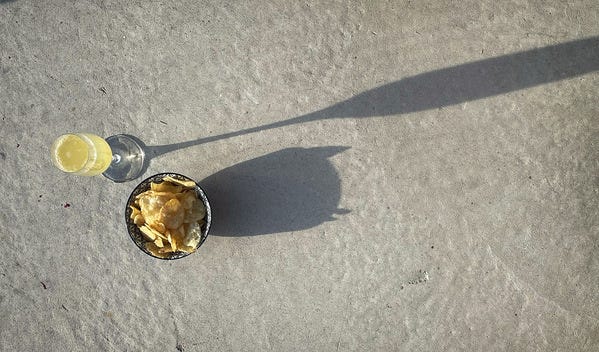
Next Week…Reno update, Italian white wine review, and Mexican cooking.
With luck, I will be sharing my new coffee/cocktail bar installation next Tuesday. The contractor arrives on Monday for what he promises will be a quick build. So now that I’m writing this, I largely suspect I will only be able to report the process by Tuesday, and give the full before and after in two weeks. It’s about to get messy; wish this Type A girl a little strength.
I’ve just picked up some nifty Italian whites that I’m excited about. Too soon for reviews in today’s love letter, but I will offer a full report next. I’m off to Italy for the truffle hunt in April, so perhaps my excitement is colouring my current content. But I’m ok with it. Hopefully you are, as well.
I start my Mexican cooking course this Saturday! I’ve been desperate to take this class since the lockdown, and finally the stars – and schedules – have aligned to make it happen. Move over Italy, hola Mexico!
Can I ask you a favour? If you like what you read here, would you mind sharing Quaintrelle with a few food and drink loving friends? People are telling me they’re not aware I have this newsletter, and, fair enough, it’s only been three weeks, but it’s frustrating to hear those who want to read it, aren’t even aware of it. It would mean so much to me if you could send it along to someone who might really enjoy this little communique. Thank you.
Much love,
Erin


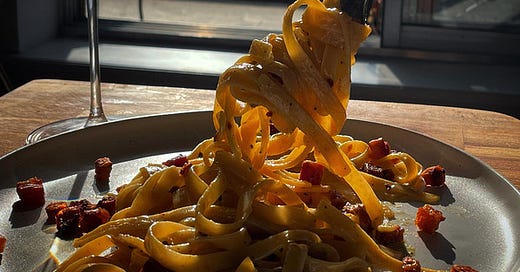



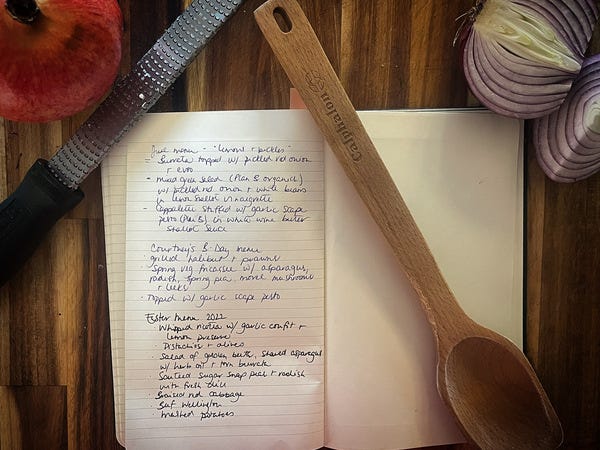
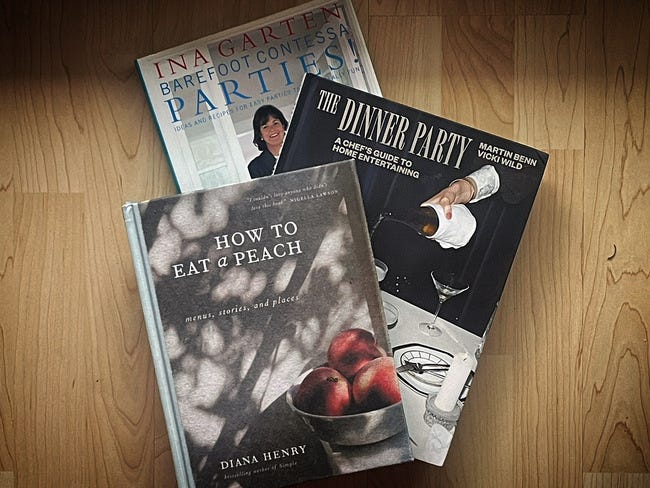
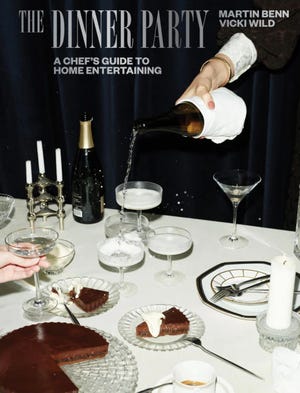
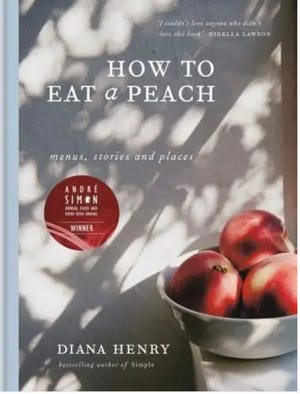
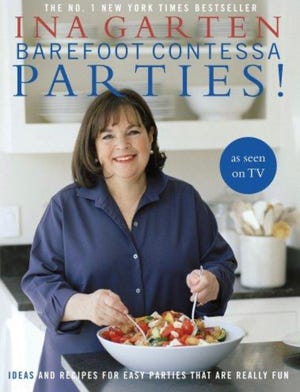
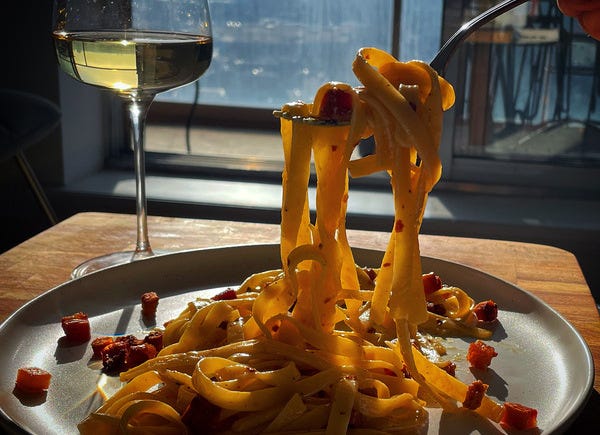
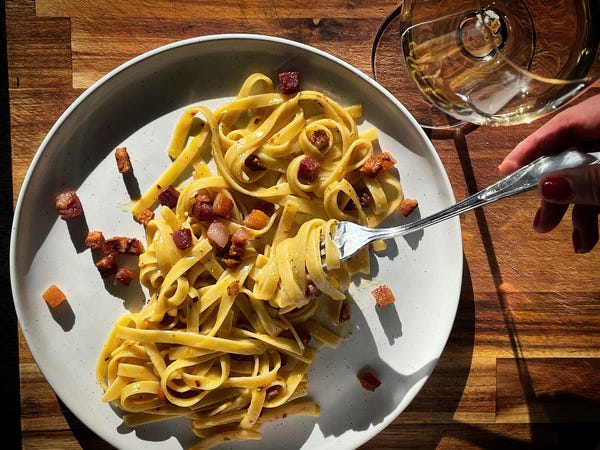
This makes me want to throw a dinner party, asap! Thanks, Erin!